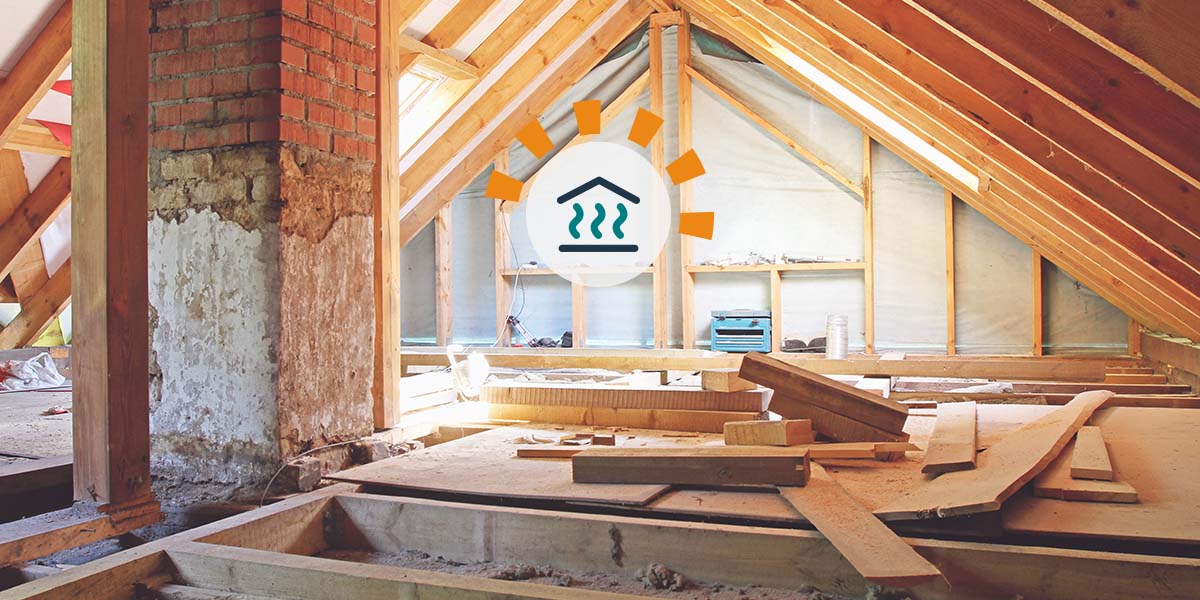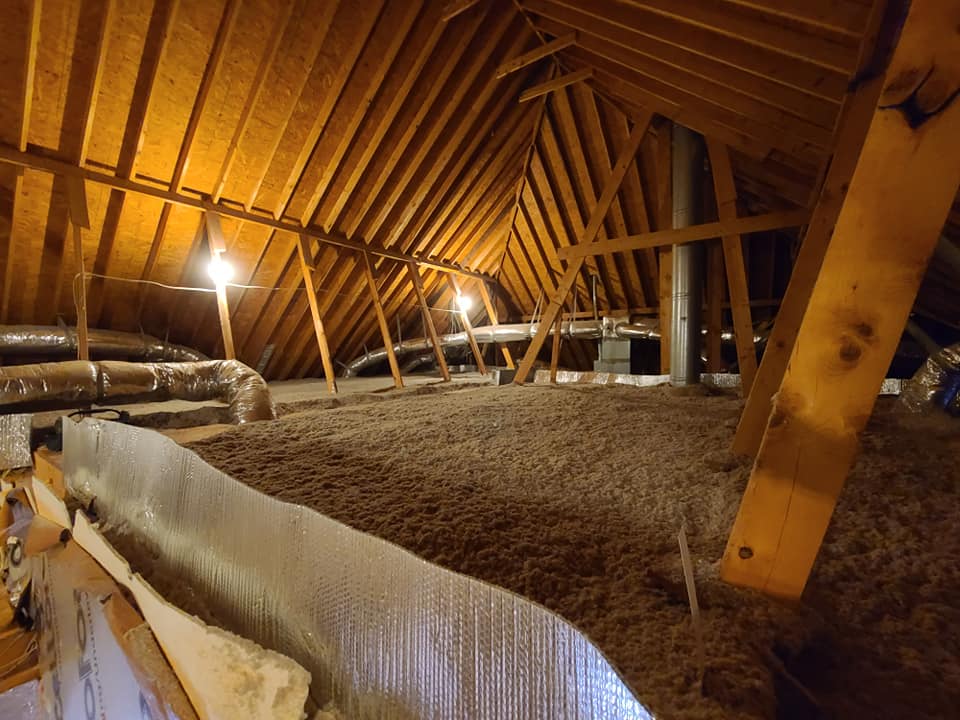Attic Insulation DFW: The Trick to Lower Energy Costs and Improved Home Convenience
Wiki Article
Discover the Various Kinds of Attic Insulation and Their Special Benefits for Your Home's Power Efficiency

Fiberglass Insulation
Fiberglass insulation is among the most commonly utilized materials for attic insulation as a result of its exceptional thermal performance and cost-effectiveness. Composed of small glass fibers, this material successfully traps air, producing an insulating barrier that helps preserve consistent interior temperatures. Its high R-value per inch makes it especially effective at resisting warmth transfer, which is critical for energy preservation in homes.
Installment of fiberglass insulation is reasonably uncomplicated, commonly offered in batts or loose-fill forms, suiting numerous attic room configurations. Furthermore, it is non-combustible and resistant to wetness, decreasing the threat of mold development. This sturdiness adds to its longevity, making fiberglass a sensible long-lasting investment for homeowners.
Additionally, fiberglass insulation is often manufactured from recycled materials, which improves its eco-friendliness. The material can additionally add to soundproofing, decreasing noise transfer in between rooms. While it is vital to wear protective equipment during setup to prevent irritation from the fibers, the total benefits of fiberglass insulation, including power cost savings and ecological considerations, make it a preferred selection for boosting attic room efficiency and advertising a comfy living setting.
Spray Foam Insulation
Spray foam insulation is a very reliable alternative for attic room insulation, recognized for its remarkable air sealing and thermal performance. This ingenious insulation material is made up of a combination of isocyanate and polyol material, which, when integrated, broadens quickly to fill voids and dental caries in the attic room space. Its capability to comply with various surface areas ensures a continuous obstacle against air leakages, considerably reducing heat loss during colder months and warmth gain during warmer seasons.One of the essential advantages of spray foam insulation is its high R-value per inch, which means it offers superb thermal resistance in a reasonably thin application. This is particularly advantageous in attic rooms where space is commonly minimal. Furthermore, spray foam can aid decrease wetness accumulation, reducing the danger of mold and mildew development, which can be harmful to both the framework and indoor air top quality.
While the preliminary price of spray foam insulation may be greater than typical alternatives, its long-term energy savings, combined with boosted comfort and enhanced home worth, make it a rewarding investment for house owners looking for enhanced energy effectiveness. Attic Insulation DFW. Overall, spray foam insulation stands out as an effective option for enhancing attic insulation
Cellulose Insulation

Cellulose insulation is a preferred option for attic insulation, mostly composed of recycled paper items treated with fire retardants. This eco-friendly option is recognized for its exceptional thermal performance, effectively minimizing warm transfer in both summertime and winter months. The thick composition of cellulose permits it to fill up spaces and gaps in attic rooms, supplying a smooth obstacle against air leakages.
Among the considerable benefits of cellulose insulation is its capability to resist mold and parasites, owing to the fire retardant treatments utilized throughout production. Additionally, it flaunts a high R-value per inch, which translates into superior power performance. Home owners can expect lower home heating and air conditioning expenses as an outcome of boosted insulation.
Installment is usually achieved via blowing loose cellulose into the preferred area, permitting a reliable and fast process. This method additionally decreases disturbance to the existing structure. In addition, cellulose insulation has a relatively reduced environmental effect, as its manufacturing procedure makes use of recycled materials, contributing to sustainable building techniques.
Rock Woollen Insulation
Amongst the different alternatives for attic insulation, rock wool, likewise called mineral wool, stands out as a result of its impressive thermal and acoustic performance. Made from all-natural or recycled materials, rock woollen is developed by melting rock and spinning it into fibers, leading to an item that offers exceptional insulation buildings.Among the significant benefits of rock woollen insulation is its high R-value, which indicates its effectiveness in standing up to heat flow. This particular not just improves energy effectiveness however likewise adds to preserving a comfortable indoor temperature year-round. Additionally, rock wool is inherently fire-resistant, making it a safer option for homes as it can hold up against high temperature levels without melting or launching harmful fumes.
Furthermore, rock wool insulation excels in soundproofing abilities, effectively decreasing noise transmission between areas and from outside resources. Overall, rock wool insulation supplies a thorough solution for improving power efficiency, safety, and convenience in residential settings.
Radiant Obstacle Insulation
Radiant barrier insulation offers as a reliable solution for lessening warmth transfer in attic rooms, particularly in warmer environments. This kind of insulation jobs by reflecting induction heat away from living rooms, thereby lowering the quantity of heat that goes into a home during hot climate - Attic Insulation DFW. Normally made up of a highly reflective product, such as light weight aluminum foil, glowing barriers are set up in attic rooms, facing the roofing system, where they can obstruct incoming warm from the sunlightThe key advantage of glowing obstacle insulation is its ability to reduced air Discover More Here conditioning expenses. By mirroring heat instead of absorbing it, radiant obstacles can aid keep a more steady indoor temperature, reducing the work on a/c systems. This performance converts right into lower energy bills and enhanced comfort for house owners.
Along with power financial savings, glowing go to these guys barriers can additionally add to enhanced indoor air quality. By minimizing warmth build-up, they assist reduce moisture degrees, which can stop mold growth and enhance general air circulation. When installed appropriately, radiant obstacle insulation can be an important addition to any energy-efficient home, making it a worthy factor to consider for homeowners wanting to enhance their attic room insulation strategy.
Conclusion
In conclusion, understanding the numerous kinds of attic insulation-- fiberglass, spray foam, cellulose, rock wool, and glowing barriers-- makes it possible for homeowners to make enlightened decisions pertaining to power performance. By choosing the ideal insulation material, significant decreases in power costs can be attained, along with improvements in indoor comfort.

In conclusion, comprehending the various kinds of attic insulation-- fiberglass, spray foam, cellulose, rock wool, and radiant obstacles-- allows homeowners to make educated decisions regarding energy efficiency.
Report this wiki page